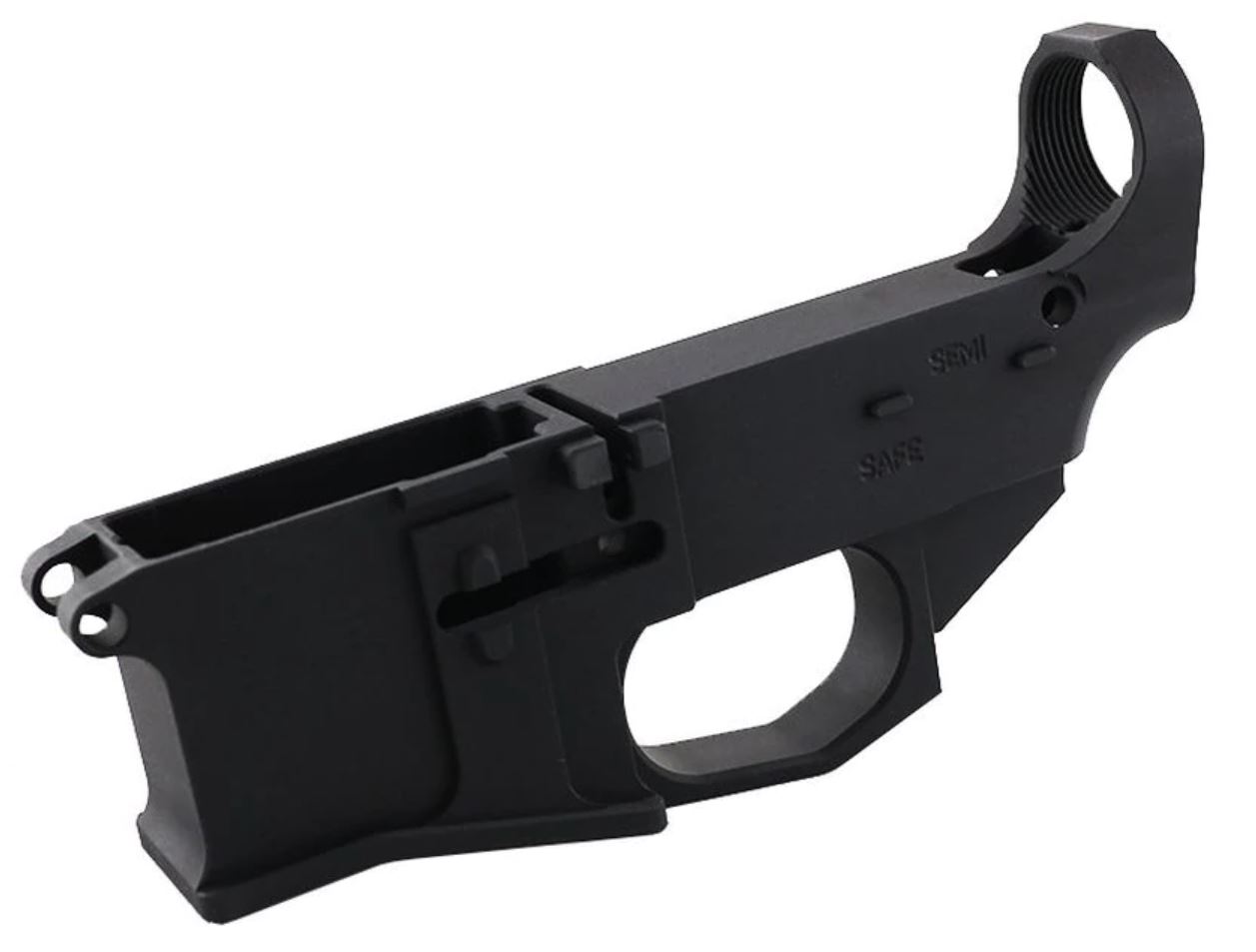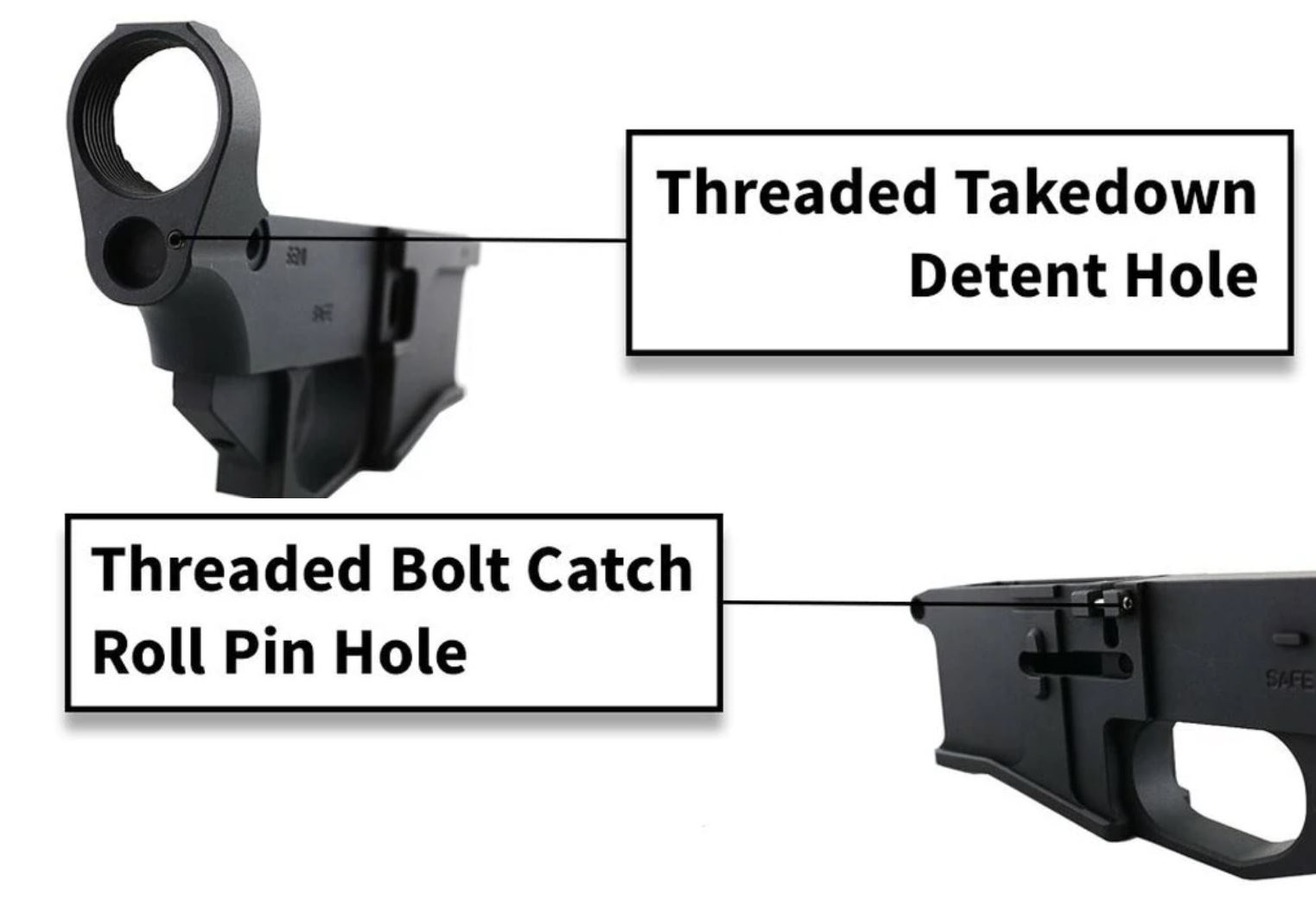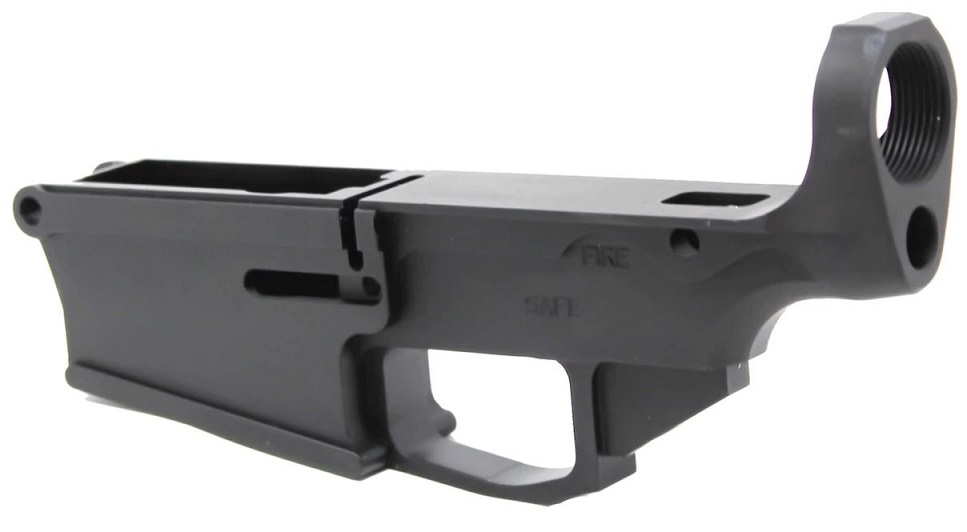Billet (Premium) 80% Lower Review & FAQ
Posted by Gun Builders Depot on Feb 25th 2021
The AR-15 lower receiver is a pretty standardized firearm. But when it comes to 80% lowers, there are quite a few options available for different calibers. Some are made with different materials -- forged or billet aluminum, polymer, even carbon fiber. We're clearing up any confusion you might have when it comes to a billet vs a forged (mil-spec) 80% lower, example our own Premium 80% Lower made for the AR-15 chambered in 5.56 NATO, .223 Remington, 6.5 Grendel, and 300 Blackout.
The Premium Billet Lower (AR-15)

So, what makes the lower "premium"? For starters, we ditched the typical forged configuration which requires three additional install steps that are, for lack of better phrasing, a pain in the ass. Specifically, we're talking about the roll pins and spring-loaded detents that come with the typical lower parts kit installation. The roll pins are required for securing the bolt catch and trigger guard and normally, you also need to fight with a spring-loaded pin to secure the safety lever while simultaneously securing the castle nut and buffer tube.
Our billet lower negates these three install steps, which, combined, can double the length of your LPK install. It also eliminates the risk of damaging your receiver's finish by removing the need for pins, hammers, and punches altogether. Instead, threaded fittings replace these three pins and detents:

These fittings are replaced with simple hex-head bolts and a provided Allen key for securing them during the installation. The trigger guard is not a separate component, like other forged lowers. Instead, it's fabricated as a part of the receiver. This adds strength and rigidity to the receiver. Ditching the pins and traditional detents for the bolt catch and safety lever not only saves time. It also saves you a bit of cash, since roll pin punches are required and they tend to cost around $20 to $40. A brass gunsmithing hammer is also required with these punches to avoid damaging the receiver during the install.
Physical Specifications
- Caliber: 5.56/.223, .300 BLK
- Construction: Billet 6061 T6 aluminum
- Finish: Type III Hardcoat anodized
- Engraving: "FIRE", "SAFE"
- Buffer: Mil-spec diameter
Available for .308 AR Builds, Too

The LR-308 has become a wildly popular alternative to building the typical AR-15 chambered in 5.56 NATO or .223 Remington. Developed by DPMS Panther Arms for the civilian market, this .308 AR replaces the ArmaLite AR-10, which is typically only sold to military and law enforcement. We brought the LR-308's 80% lower receiver (alongside our .308 rifle build kits) to market with the same premium billet configuration. It also employs the same threaded fittings and ditches those roll pins. Furthermore, it uses an AR-15 lower parts kit and exclusively 5.56/.223 components (once fabricated with a jig) to make the install guesswork-free and simple.
Physical Specifications
- Caliber: .308 Winchester, 6.5 Creedmoor
- Construction: Billet 6061 T6 aluminum
- Finish: Type III Hardcoat anodized
- Engraving: "FIRE", "SAFE"
- Buffer: Mil-spec AR-15
Frequent Questions
Q: So, these receivers aren't finished?
A: No. Like all other 80% lower receivers, these billet units require fabrication with an 80% jig kit. Since the exterior shape and dimensions of these receivers vary just slightly from the typical forged lower, you should confirm whether the jig you're interested in purchasing is compatible, first. Compatibility will be listed on the product page, usually in red text.
Q: How do I finish a receiver with a jig?
A: In addition to the jig kit, you'll need a drill press. A mini-mill works best. This guide covers the specifics involved with completing an 80% lower, including pictures and step-by-step instructions.
Q: What AR-15 parts is the billet AR-15 lower compatible with?
A: Besides its slightly different physical appearance and threaded fittings, the Premium Billet Lower is 100% "mil-spec" like any forged AR-15 receiver. It utilizes the same components and can take advantage of any typical AR-15 upper receiver assembly chambered in 5.56 NATO, .223 Remington, 300 Blackout, or 6.5 Grendel. That means it also works with any of our available AR-15 rifle kits or pistol build kits (except for the AR9, which uses our 9mm 80% lower).
Q: What about the LR-308 billet lower's compatibility?
A: Like its 5.56 counterpart, the .308 billet lower is considered "mil-spec", too. It uses a regular AR-15 lower parts kit and standard AR-15 buffer tube, pistol grip, and buttstock. It works with any DPMS-patterned .308 or 6.5 Creedmoor build kit.
Q: What's the big difference between billet and forged lowers?
A: Forged receivers are forged in a mold, using heat and pressure, from an alloy called 7075-T6 aluminum. These billet receivers are cut from a large piece of billet alloy called 6061-T6 aluminum. Billet receivers provide an advantage because they can be fabricated with more complex shapes and fittings using CNC, like the threaded fixtures on these lowers. This guide compares these two alloys in detail.
Q: Can I still use roll pins on these if I wanted to?
A: No. The holes for securing the bolt catch and safety detent are threaded with different diameters than the roll pins found in the lower parts kit. Attempting to force a roll pin into these receivers will simply damage them. You'll want to use the threaded fittings anyway -- it makes for an easier install.
Q: Are the tools/parts required for the threaded fittings included?
A: Of course! Your receiver will ship with the appropriate hex-head bolts and the right Allen key for finishing your parts kit install. As for the left-over parts from your LPK, hold onto them for that future AR build, should you choose to use a forged receiver.
DISCLAIMER: If you are new to the world of DIY gun building, you likely have a lot of questions and rightfully so. It’s an area that has a lot of questions that, without the correct answers, could have some serious implications. At GunBuilders.com, we are by no means providing this content on our website to serve as legal advice or legal counsel. We encourage each and every builder to perform their own research around their respective State laws as well as educating themselves on the Federal laws. When performing your own research, please be sure that you are getting your information from a reliable source.

